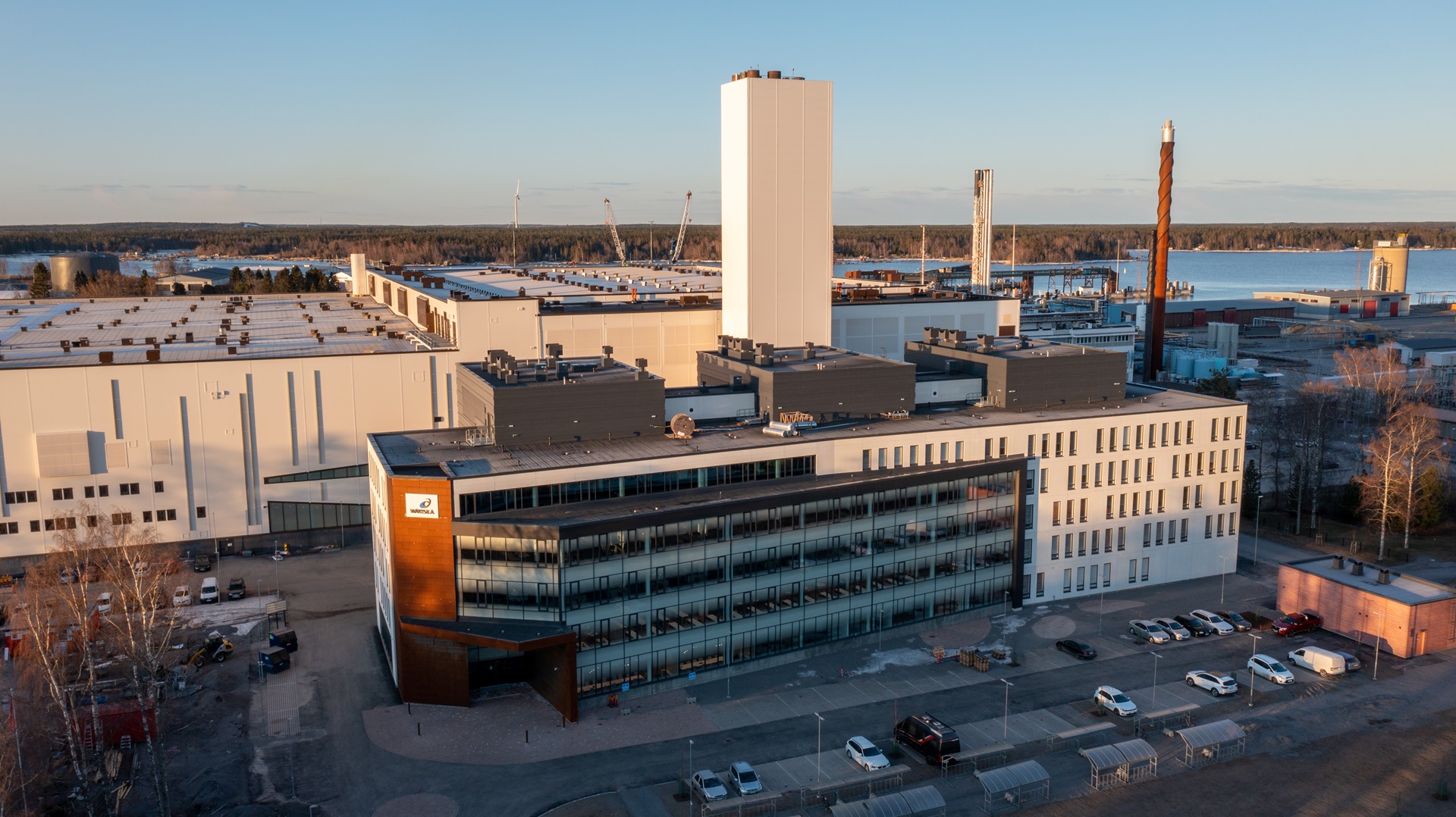

Wärtsilä officially opened its new technology centre, the Sustainable Technology Hub (“STH”), in Vaasa, Finland on 1 June. The new centre will contribute to efforts to advance the global decarbonisation of marine and energy by fostering innovation, collaboration, and the development of green technologies using sustainable fuels and digital technologies. The centre was previously referred to as the Smart Technology Hub, but the name was changed to Sustainable Technology Hub in conjunction with the opening ceremony.
The construction of the new centre was announced in 2018 with a total investment of around 250 MEUR. It features a modern fuel laboratory, flexible technology and engine testing facilities, as well as a state-of-the-art production system with a high level of automation. The centre employs 1,500 people under one roof, providing operational efficiency as well as a reduced carbon footprint in logistics. The centre has advanced energy recovery systems that enable self-sufficiency for heat energy. With the expansion of sustainable fuels, the STH is a cornerstone for achieving the company’s 2030 target for carbon neutrality in its own operations.
A day before the official inauguration, we organised a conference and a tour of the premises to investors and media. In this blog post, we provide a brief summary of the conference which was also recorded. The recording can be found here and the presentation materials are available here. More information about the centre can also be found on its website: https://www.sustainabletechnologyhub.com/.
Our President & CEO Håkan Agnevall started by talking about the acceleration of decarbonisation of marine and energy. In the marine industry, decarbonisation is much about fuel flexibility and blending different fuels. When customers are making investment decisions, critical decision-making criteria are multifuel capabilities and conversion capabilities for future fuels. On the energy side, the total electricity generation is expected to grow by a factor of three by 2050 (IEA World Energy Outlook 2021). This is driven by both economic growth and electrification. Another key trend in the energy sector is the shift to solar and wind. But as we know, balancing power is needed because the sun does not always shine, and the wind does not always blow. This is where we at Wärtsilä come in with our balancing technology. We provide two complimentary balancing technologies; thermal balancing (engines), and energy storage (batteries).
As the decarbonisation transformation in the marine and energy sectors moves forward, there will be a need for a broad range of solutions. The good news is that we have a leading position in many of them. We are developing the engine technology for carbon neutral fuels such as ammonia and hydrogen as we speak. In addition to the engines, we also provide electrical solutions, energy saving devices, carbon capture, and digital services. To be a credible thought leader in our industries, one needs to have a broad product offering, like we do. We also partner up to provide solutions that we do not have our own technology for.
Services are a key driver for our growth and profitability, and we have a lot of exciting opportunities there. When we talk about moving up the service value ladder, we mean moving from transactional services (spare parts and field services), optimised maintenance, and retrofits & upgrades towards performance-based agreements. However, we also see significant opportunities in transactional services as our digital tools give us the opportunity to address the transactional space in a different way.
So, how does STH fit into the whole story? In STH, we have many of our key experts and critical competence in developing, testing, manufacturing, and servicing. We innovate new products and solutions compatible with future fuels. We also have the privilege of having a complete ferry, Aurora Botnia, as our floating test lab. We are a proud member of the Vaasa energy cluster, a key location for many industrial companies in Finland, and we can attract key talent and competences to this area.
After Håkan, Roger Holm, President of Wärtsilä Marine Power and Sean Fernback, President of Wärtsilä Voyage, talked more about the decarbonisation of the marine industry.
Roger started by pointing out that although it may seem from the outside that the decarbonisation of the marine industry is happening slowly, all the changes will happen during one vessel’s lifespan. The key to the transformation is fuel flexibility, as the vessel owners need to think how the value of their asset can be maintained throughout the years in the decarbonisation journey. Our services will also change in the future, as more upgrading is expected to happen during the lifetime of a vessel.
Sean mentioned that digitalisation of the maritime industry is well behind other industries, which tells us that there is lots of value to be created. Wärtsilä Voyage’s digital solutions help our customers accelerate their journey to maritime decarbonisation by providing smart routing and voyage planning, assisted systems (situational awareness, collision avoidance, smart docking), performance monitoring and fuel efficiency, smart port management & just-in-time arrival, automation & navigation systems, and simulation solutions for onboard and onshore.
Sushil Purohit, President of Wärtsilä Energy continued by talking about the decarbonisation of the energy industry. The starting point is of course adding renewables - wind and solar. However, renewable energy is intermittent and requires balancing power, such as engines and energy storage which we at Wärtsilä provide. Existing and new balancing engines will play an essential role in stabilising the power system, as we move to phase out inflexible plants, convert the balancing plants to run on sustainable fuels and phase out fossil fuels.
The conference concluded with a Q&A session with the investors and media, which starts at 1:08:40 in the recording.